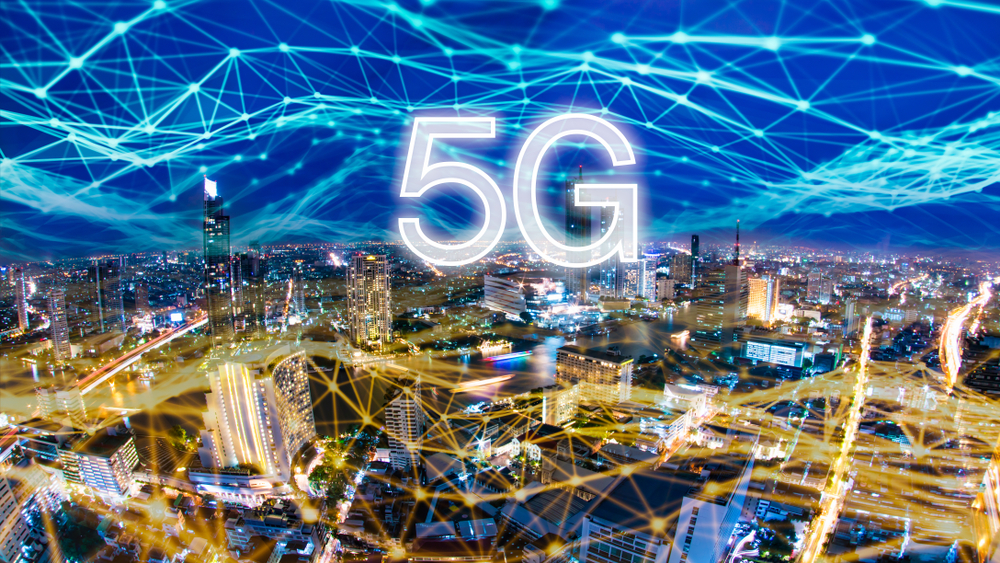Source: martechtoday.com, February 2019
Carriers and device makers are rolling out the super-fast wireless service this year, so we asked experts about the potential for marketing and advertising.
The coming of next-gen 5G wireless transmission will be a big deal for marketers.
That’s the view of Alex Hertel, CEO of experiential marketing firm Xperiel, adding that this new level of wireless speed will erase the differences between online and offline. Many other marketers agree.
5G rolls out this year
5G is gearing up to launch later this year. According to mobile component maker Qualcomm, nearly two dozen wireless carriers will begin launching 5G services in 2019, including all the major carriers in the US, and eighteen Qualcomm-using device makers are releasing 5G mobile models.
Verizon has launched a 5G-enabled home broadband service, AT&T has started 5G service in a dozen cities, and 5G networks are expected to be available by mid-2019.
“The adoption of 5G will be even faster than what we saw on 4G, which was already fairly fast,” Qualcomm director of marketing Ignacio Contreras told Tom’s Guide. With data rates from 1 to 10 gigabits/second — up to 100 times faster than 4G LTE — and a major decrease in latency, 5G could alter a lot of the existing digital landscape.
The end of cable?
One impact, according to Ian Greenblatt, a managing director at marketing information services firm J.D. Power, is that cable connections and set-top boxes could become irrelevant. If you get a new, large TV, for instance, it might pick up all the HD and 4K programming you want from the air wirelessly.
This would totally disrupt the cable and Internet Service Provider industry because the fixed wire infrastructure would no longer be necessary to deliver fast Internet and hundreds of TV channels, and it would similarly disrupt the ad-buying and -serving infrastructure built around it. But it also means something more profound for marketers: any surface with a 5G wireless transceiver can become a high-resolution screen, and an outlet for the most intelligent computing service available.
Any surface can become an interactive marketing medium
A 5G-enhanced media environment, in turn, offers more ad inventory opportunities as super-fast wireless connectivity means high-end screens can be located anywhere.
It also could dramatically change the kind of messaging marketers and advertisers do.
In particular, Hertel, Greenblatt and others envision a new era for augmented reality, as overlays of high-quality, interactive and intelligent imagery become available anywhere.
Not just in regular-looking AR-enhanced glasses, but in store windows, on walls, in car dashboards and elsewhere. Greenblatt suggests that advertisers may want to give away branded AR glasses to directly connect their customers with their own layers on reality, providing a new kind of marketing channel.
And not just the 2D graphical overlays that we now often associate with AR. In addition to all kinds of 3D modeled imagery, Hertel envisions that this kind of super-fast bandwidth opens the door to the transmission of holograms. Greenblatt envisions that, once 5G transceivers get small and cheap enough, moving imagery overlays on grocery store products could become common.
‘A new hands-on way’ to showcase products
This proliferation of advanced AR, said Colgate Mattress Head of Brand Strategy Natasha Khairullah, could change the way potential customers “experience the product [or service] in a tangible, realistic way that’s completely new.”
As a result, she said, marketers will have to “plan pre-emptively for how they can showcase their product in a new hands-on way.” Kati Bergou, VP at Rubenstein Public Relations, suggests 8k streaming content will make transmission of “live events breathtaking,” taking remote viewing to a new level that could transform how performances are marketed.
For Allen Adamson, co-founder of marketing services firm Metaforce and the former North America chairman of global branding agency Landor, the biggest marketing impact of 5G will be that consumers will have actual voice conversations with mobile devices, not just issue a few voice commands and interact at other times via thumb-typing or screen-touching. Mobile marketing could become entirely oriented toward voice conversations.
Massive datasets on demand
Ruth Yomtoubian, partner marketing innovation firm Before Alpha, points to the possibility that 5G could also make massive marketing datasets available on demand.
“A shoe brand,” she said via email, “might be incentivized to share [their entire inventory or customer data] with hotel chains across the world, so that when a traveler forgot to pack their running shoes, the hospitality company can advertise a particular brand of shoe within seconds.” In other words, huge data sets could be made available between brands and their vendors, with the same on-demand frequency that, say, individual datasets might be available today.
‘Will blow up the [ad] architectures’
But it’s not just data repositories that may have to be redesigned to handle massive demand.
Advertising infrastructures will also have to be re-invented, ad exchange OpenX Chief Product Officer Todd Parsons said, since “5G will blow up the architectures we have.”
Present-day programmatic technologies aren’t built for the demands of a system that delivers ads up to a hundred times faster, he said, noting that OpenX already handles 100 billion ad requests a day.
David Zapletal, EVP of Media Operations at media holding company Digital Remedy, points out that “the industry needs to prepare” for 5G in other ways as well, such as updating creative specs on ad formats and file sizes.
And those are only some of the “first-order effects.” Greenblatt expects the biggest surprises will be in the “second-order effects,” the way 4G led to the crash in the price of taxicab medallions because of the rise of wireless-managed fleets from Uber and Lyft.
As one example, he pointed to a possible transformation in the way we, and marketers, think about cars.
Because 5G will give cars access to the highest-end computing intelligence — and thus make self-driving vehicles more likely — autonomous cars may become moving living rooms, creating marketing and advertising opportunities beyond audio.

